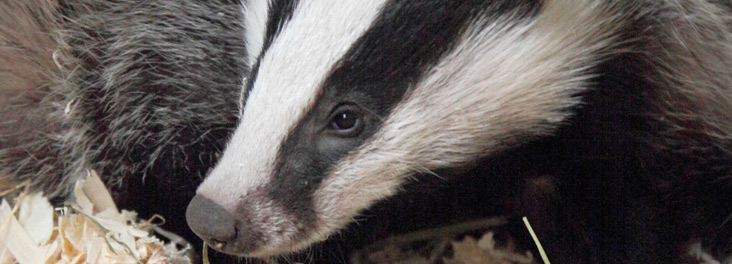Why are we culling badgers?
Badgers - tubby, short, stripy woodland creatures who like to snuffle about after dark - why do we want to kill them? It's all about bovine Tuberculosis (bTB). Bovine TB can be transmitted to humans. It very rarely is because we have a very effective BCG vaccine, and we also pasteurise nearly all our milk. It also affects and can be transmitted by deer, pigs, cattle, sheep, goats, cats and dogs. In fact, in recent years two cases of bTB in humans were shown to be transmitted by domestic cats.
Bovine TB though is on the increase. In the 1980s it was isolated to a few isolated pockets, but is now spread throughout the South West and West of England and Wales. In order to comply with European Food Safety legislation and our own food health standards, cattle infected with bovine TB have to be slaughtered, and movement restrictions are put in place on the whole herd. In 2010/11 25,000 cattle were slaughtered because of bTB, at a cost to the government (in compensation to farmers) of £91 million.
An outbreak in a cattle herd will cost the average farmer about £30,000, of which the government will recompense around £20,000 leaving the farmer with a loss of £10,000.
Clearly it's pretty important to try to limit the spread of this disease.
 |
| from RSPCA |
Cattle control measures to help control the spread of the disease within farm populations include movement restrictions on potentially infected herds, and there are also vaccinations being developed, though at present there are drawbacks to these, and they would probably need to be repeated annually.
Wild animal controls include culling badgers, or vaccinating them.
The Welsh Assembly decided to focus on vaccinating badger populations rather than culling them, and they are monitoring the results of this.
In 2008, Hilary Benn, then the Secretary of State for Environment, Food and Rural Affairs for England refused to authorise a cull, instead allocating £20million to develop vaccinations.
| RSPCA |
Between 1998 and 2008 the Randomised Badger Culling Trials took place across England. Ten 100 sq km areas were selected for culling. In total 11,000 badgers were cage-trapped and killed, and the incidence of bTB in these and surrounding areas was monitored during and after the trial, and compared with the incidence of bTB in ten more 100 sq km areas where culling didn't take place.
The reports from the trials suggested that there was a reduction in the incidence of bTB in the cull areas, but there was a larger increase in incidence in the areas around the culling zones, suggesting that infected surviving badgers could be moving out of the area and infecting new areas. Further evidence showed that any reduction in bTB incidence in the areas had disappeared after three years. The cost of the cull was also calculated to be several times more than any economic benefit. It was concluded that "badger culling can make no meaningful contribution to cattle TB control in Britain".
The incoming Secretary of State in 2010 decided to ignore this damning report, and promptly began her "Bovine TB Eradication Programme for England", which was to include a further badger cull in 2012/13 in two areas, which would be monitored and then rolled out across the country.
The monitoring was to assess the humaneness of the more economically viable "free shooting", not to assess the effectiveness in reducing bTB (that had already been demonstrated to be negligable). Free shooting involves shooting at badgers as they go about their business above ground. Unfortunately they have very thick skulls and a thick subcutaneous fatty layer, so the likelihood of them getting killed with the first shot is low, by which time the injured badger has bolted into the sett to die a lingering death below ground. In the 2012/13 cull 6-18% of the badgers took longer than five minutes to die.
 |
| Badger Trust |
The first cull took place from August 2013, intending to kill 70% of the badgers in two 150 sq km areas in Gloucestershire and Somerset over six weeks. In the end the targets were not met, and the cull was extended by three weeks to allow more badgers to be killed. In total 1861 badgers were shot, many by cage-trapping and shooting rather than free-shooting, as this was more successful. Culling was not selective, and its estimated that as many as six in every seven badgers killed was probably healthy and free of bTB.
The second cull
Despite the evidence and public opinion against the random slaughter of badgers for no clear benefit, a second cull in the same areas began in September 2014. It has not yet rolled out any further across the country. The government is keeping very quiet about it.
The Badger Trust and the RSPCA are not.
If you want to get involved and Back off the Badgers, then go to either of their websites for more information on what you can do.
Is there an issue that you want to find out about? Comment below and I'll report on it in a future post.


No comments:
Post a Comment